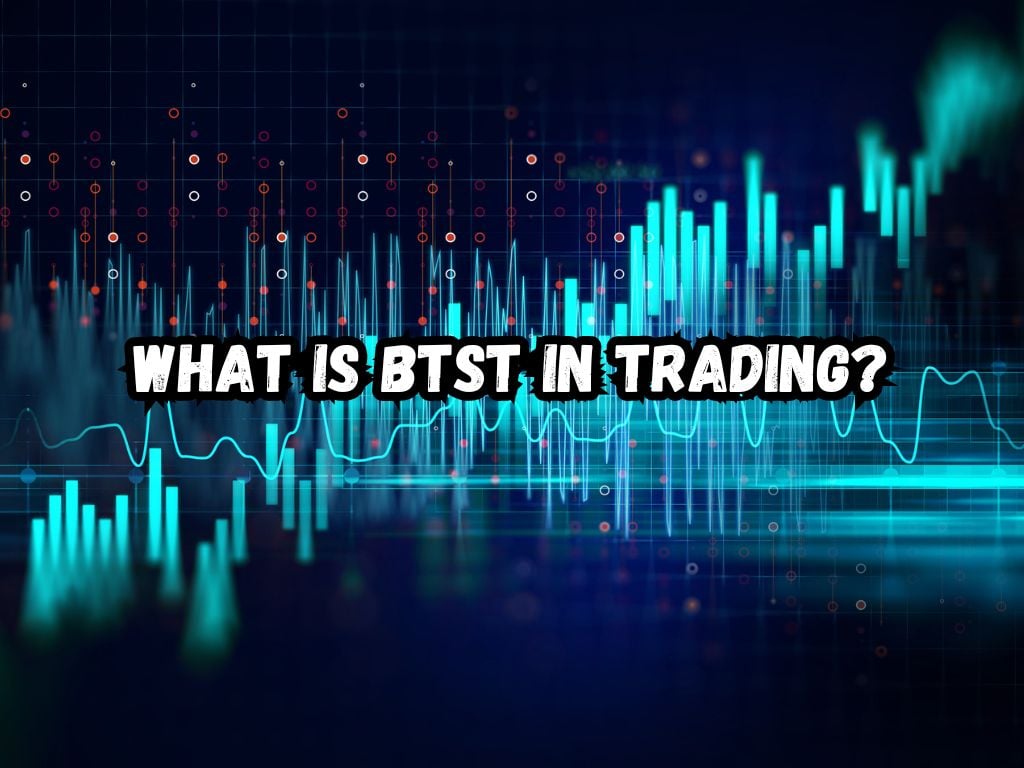The world of stock trading unfolds a myriad of strategies, each tailored to match the diverse needs and risk appetites of traders. Amidst this variety lies a compelling strategy known as BTST – Buy Today, Sell Tomorrow. With the financial markets’ dynamics constantly evolving, BTST offers a nuanced approach tailored for those looking to leverage short-term movements.
So, What is BTST in trading? This guide demystifies BTST trading, equipping both novices and seasoned traders with the knowledge to navigate this strategy effectively.
What Is BTST in Trading?
Buy Today, Sell Tomorrow (BTST) stands as a strategic approach in stock trading where traders purchase stocks and sell them the next trading day.
This strategy pivots around the settlement cycle, traditionally set as T+1 in many markets. This means the trade settlement, involving the transfer of stocks and funds, occurs one day after the transaction.
BTST leverages this cycle, allowing traders to sell stocks before the actual settlement, banking on short-term price movements for gains.

The Mechanics of BTST Trading
Understanding BTST begins with grasping the settlement cycle. When a trader executes a buy order, the ownership of the stocks doesn’t immediately transfer.
Due to the T+1 cycle, the actual transfer happens the next day. BTST traders use this window to sell the stock, essentially selling shares they technically don’t own yet but will by the settlement period.
For instance, if you purchase 100 shares of a company on Monday, you can put them up for sale on Tuesday, profiting from any price increase without waiting for the settlement.
Potential Benefits of BTST Trading
The allure of BTST lies in its potential for quick gains. Traders capitalize on the stock’s short-term price volatility without the commitment required in long-term investments.
This strategy also offers flexibility, as traders can respond swiftly to market movements without being tied down by the settlement process.
Strategic Considerations in BTST Trading
Choosing the right stocks is pivotal in BTST trading. Look for stocks with high liquidity and a history of significant overnight price movements.
Market news, economic indicators, and corporate announcements can serve as signals for potential BTST opportunities. It’s about timing and insight, recognizing when a stock might experience a short-term upswing.
How to Execute a Successful BTST Trade?
Executing a BTST trade starts with research. Identify potential stocks by analyzing market trends and news. Once you’ve made a choice, execute a buy order. The next step is monitoring. Keep a close eye on the stock’s performance and market conditions.
When you spot a favorable price movement, place a sell order the following trading day. Tools such as market analysis software can aid in these decisions, offering insights and alerts on stock performance.
Risks and Limitations of BTST Trading
While BTST offers opportunities, it’s not free of risks. Market volatility can move against your predictions, with overnight news or global events potentially causing stock prices to drop.
There’s also the legal framework to consider. Different markets may have specific regulations regarding BTST trading practices. Awareness and adherence to these rules are crucial to avoid unintended violations.
Comparing BTST with Other Trading Strategies
BTST stands distinct from strategies like intraday trading, where traders buy and sell within the same day. Unlike intraday trading, which requires constant market watch, BTST allows a bit more breathing space, banking on overnight market movements.
However, each strategy has its place, with the choice often boiling down to the trader’s style and preference.

Pro Tips for BTST Trading
Success in BTST trading requires a blend of market knowledge, timing, and strategy. Firstly, emphasize stock selection, focusing on those with good liquidity and volatility.
Secondly, stay informed. Regularly follow market news and trends to anticipate movements. Lastly, be mindful of risks. Set clear limits for potential losses to avoid significant financial setbacks.
Avoid common pitfalls like chasing low-cost stocks without considering their market stability. Also, resist the temptation to ignore market indicators in favor of intuition.
While instincts play a role, informed decisions based on research and analysis stand a better chance of success.
Frequently Asked Questions
How does BTST differ from intraday trading?
BTST involves buying stocks and selling them the next day, utilizing the settlement cycle, whereas intraday trading sees both buying and selling within the same day, avoiding the settlement process entirely.
What are the key factors to consider before executing a BTST trade?
Key factors include liquidity and volatility of the stock, market trends, and any forthcoming news that could influence stock prices. A thorough analysis of these elements can guide the decision-making process.
Can BTST be used with any stock?
Not all stocks are ideal for BTST due to factors like liquidity and volatility. Preference should be given to stocks that show a pattern of significant short-term price movements.
How do overnight market news and events affect BTST trading decisions?
Overnight news can significantly impact stock prices. Positive news can lead to price spikes, while negative news can cause declines. BTST traders need to anticipate these movements and act accordingly.
Conclusion
BTST trading opens a window to strategic gains in the stock market, appealing to traders looking for short-term opportunities.
By understanding the mechanism, benefits, and strategic execution of BTST, traders can navigate this approach with greater confidence. Like any trading strategy, it requires patience, learning, and a keen eye for market dynamics.
Equipped with the right knowledge and tools, traders can leverage BTST to potentially enhance their trading outcomes, striking a balance between risk and reward in the quest for short-term profits.


 Tags:
Tags:










